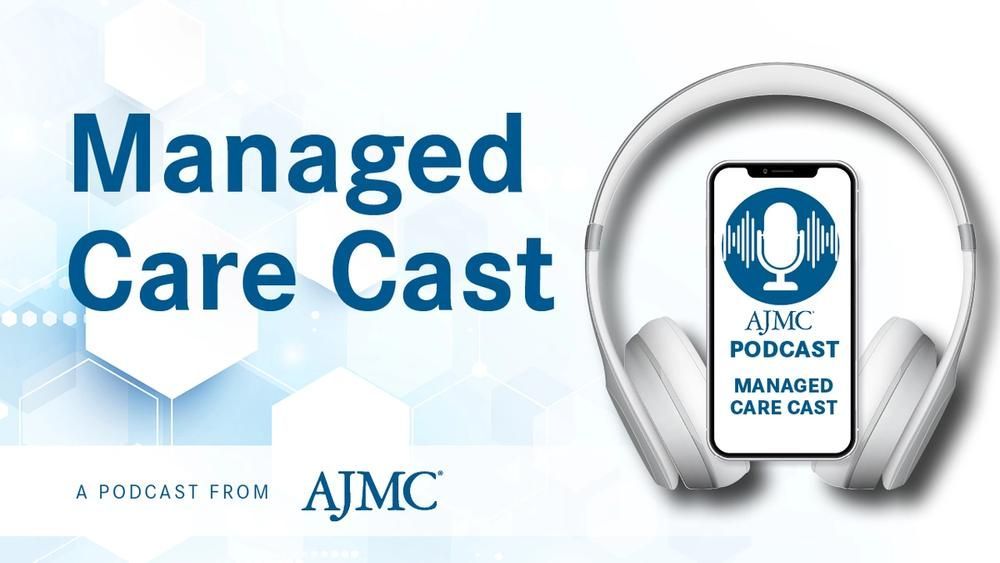News
Article
Addressing KRAS Resistance, RAS(ON) Therapies Find Limelight at AACR
Author(s):
Key Takeaways
- KRASG12C-targeted therapies like sotorasib and adagrasib have been approved, but resistance challenges persist, necessitating further research into RAS(ON) therapies.
- Revolution Medicines is conducting phase 3 trials for daraxonrasib, targeting active KRAS mutations, with promising results in preclinical and clinical studies.
KRAS-targeted therapies, including daraxonrasib and zoldonrasib, show promise in overcoming resistance in cancer treatment, as highlighted at the 2025 meeting of the American Association for Cancer Research (AACR).
Successfully targeting KRASG12C has been one of the major achievements of the decade in cancer care. Starting in 2021, almost 40 years after discovery of the KRAS gene, FDA granted accelerated approvals of sotorasib (Lumakras, Amgen) and adagrasib (Krazati, Mirati), first in previously treated non–small cell lung cancer (NSCLC),1-2 and later in combinations for pretreated colorectal cancer.3-4
Kevan Shokat, PhD | Image credit: UCSF

The first approvals came less than a decade after Kevan Shokat, PhD, and colleagues published their 2013 breakthrough5 that revealed that a “pocket” on KRASG12C could allow an inhibitor to bind to a target long deemed “undruggable.”
Despite this advance, trials showed less than half of patients with KRASG12C mutations responded to therapy, and those who initially responded often developed acquired resistance. Even as the first KRASG12C-targeted inhibitors were approved, investigators were hunting for ways to address this problem.6 Now, a wave of therapies highlighted over the past year—including at the recent 2025 meeting of the American Association for Cancer Research—(AACR) have reached later stage development.
After years of preclinical and phase 1 studies, Revolution Medicines now has a pair of phase 3 trials under way for daraxonrasib, which targets multiple KRAS mutations in their active or “on” state. RASolute 302 (NCT06625320) is well under way studying patients previously treated for metastastic pancreatic ductal adenocarcinoma (PDAC), while a trial starting this month, RASolve 301 (NCT06881784), will study daraxonrasib in pretreated patients with RAS-mutated NSCLC. Daraxonrasib and another Revolution Medicines candidate, zoldonrasib, were featured in multiple sessions at AACR.
What Are RAS(ON) Therapies?
KRAS and other RAS proteins alternate between being inactive—in an “off” state—when they bind to guanosine diphosphate (GDP) or being active—in an “on” state—and binding to guanosine triphosphate (GTP). In recent years, scientists have understood how a drug that targets KRAS in its “off” state can prompt GDP-binding RAS to switch over to GTP binding, activating pathways that cause resistance. Thus, therapies under development seek to address KRAS in this “RAS(ON)” phase, with investigation of acquired alterations a lively area of research.6-8
In a keynote address at AACR, Shokat traced the KRAS evolution, from his own team’s discoveries to new therapies in the pipeline. “The field as a whole, in the last 10 years, has gone incredibly fast to come up with innovative molecules to target KRAS,” he said.
One strategy Shokat mentioned involves tumor-targeting KRAS degraders, which invade cancer cells to prevent tumor growth and enhance treatment with PD-1 inhibitors and cetuximab.9 But he spent more time explaining the mechanisms of Revolution Medicine’s RAS(ON) therapies, which use an immunophilin, cyclophilin A (CYPA), to bind small molecules with KRAS in its active state.
Christopher Schulze, PhD, of Revolution Medicines, described this process during a 2019 AACR presentation, saying CYPA served as a “chaperone” that enables KRAS inhibitor binding to KRAS-GTP “by covalently modifying the cysteine residue of KRAS.” This alters the ability of KRAS to engage effectors such as RAF, which would normally promote cell proliferation.10 Writing In Science in 2023, Schulze et al described this interaction among CYPA, a drug candidate, and KRAS as a “tricomplex,” and reported its success blocking oncogenic signaling and shrinking tumors in preclinical models.7
Today, the company’s pipeline features daraxonrasib, described as a “multiselective noncovalent inhibitor designed to treat patients with cancers driven by a wide range of common RAS mutations,” as well as elironrasib, a covalent inhibitor for KRASG12C, and zoldonrasib, a G12D-selective covalent inhibitor to target “the most common driver of RAS-addicted cancers.”11 In a statement, the company said RMC-5127, an oral, RAS(ON) G12V-selective, noncovalent, tricomplex inhibitor, will be its next therapy in clinical development.12
AACR Features RAS(ON) Inhibitors
At AACR, zoldonrasib was featured in the press program, while a poster on daxaronrasib drew a swarm of scientists during the late-breaking abstract session on April 29, 2025. RMC-5127 was included in a session on “New Drugs on the Horizon.”
Kathryn C. Arbour, MD | Image credit: AACR

Zoldonrasib. Results from RMC-9805-001, a multicenter, open-label, dose escalation and dose-expansion phase 1 trial (NCT06162221) were presented for 90 patients with KRASG12D-mutated NSCLC.8,12 The findings show promise, reported Kathryn C. Arbour, MD, an assistant attending and thoracic medical oncologist at Memorial Sloan Kettering Cancer Center, who presented the study. Patients with KRASG12D mutations currently have no targeted therapy and are often treated with immunotherapy or chemotherapy without success, she said. The percentage of patients with this mutation varies across different cancers, from lower rates in lung cancer to higher shares in PDAC.8
At data cutoff, the study had treated 211 patients with previously treated NSCLC, including 90 who received the recommended phase 2 dose of 1200 mg daily. The maximum tolerated dose was not reached. Median time to onset of initial response was 1.4 months (range, 1.2-2.8) and the disease control rate was 89% (95% CI, 65%-99%). Among patients enrolled at least 8 weeks before the data cutoff, the objective response rate (confirmed or pending confirmation) was 61% (95% CI, 36%-83%).8,13
No grade 4 or 5 treatment-related adverse events were seen. Among those treated at the recommended dose, 4 patients had dose reductions, 8 had dose interruptions, and 1 stopped treatment due to adverse events (AEs).8,13
“Zoldonrasib was very well tolerated at all dose levels, including the 1200 mg once-daily dose,” Arbour said. The most common AEs were nausea, diarrhea, and fatigue, which Arbour described as “typically low grade” and managed with medications. More serious AEs such as rash, mucositis, and transaminitis seen with other RAS-targeted therapies did not appear, she said.8
Daraxonrasib. A late-breaking abstract served as a follow-up from a phase 1 study presented at the recent American Society of Clinical Oncology 2025 Genitourinary Cancers Symposium (ASCO GU). In those results, patients with metastatic PDAC received daraxonrasib at tolerated doses of 160 to 300 mg. Investigators reported a median PFS of 7.6 months (95% CI, 5.9-11.1) and overall survival of 14.5 months (95% CI, 8.8 to not evaluable).14
At AACR, the same data set was used to report on potential mechanisms of acquired resistance following daraxonrasib monotherapy in PDAC. Using circulating tumor DNA, investigators compared genomic alterations at baseline and end of treatment for 26 patients who had a PFS of more than 3 months. Potential mechanisms of resistance were seen in 62% (16 patients), including acquired amplifications of KRAS in 35%.15
However, the authors reported, “No acquired oncogenic secondary KRAS mutations were observed, distinct from resistance profiles reported for mutant-selective KRASG12C(OFF) inhibitors, and consistent with the broad RAS inhibitory activity of daraxonrasib.”
According to the abstract, acquired alterations were observed in RAF kinases (4; 15%); receptor tyrosine kinases (RTKs), (3; 12%); PI3K pathway genes (2; 8%), and the MYC oncogene (1; 4%) of patients. Six patients (23%) had multiple acquired alterations.15
Combination Therapy for KRAS-Mutated Cancers
Already, sotorasib and adagrasib have been studied in dozens of combinations, including the 2 that led to approvals in CRC.3,4 Of note, Revolution Medicines gained control of RMC-4630, a SHP2 inhibitor, in the midst of a phase 2 study that combined treatment with sotorasib; promising responses have been seen in NSCLC.16
Experiments published last year in Nature Communications suggest that sotorasib and adagrasib could be used alongside RAS(ON) therapy to avoid resistance. An international group of investigators showed that disease progression in vivo can occur “due to adaptive mechanisms and KRAS-GTP loading.” Using a preclinical version of elironrasib, the authors provided “proof-of-concept” that the clinical stage KRASG12C(ON) inhibitor, “alone or in combination with KRASG12C(OFF) drugs, can be an alternative potential therapeutic strategy to circumvent resistance….”17
At AACR, authors of the late-breaking daraxonrasib abstract in PDAC reported patterns of resistance and RAS reactivation that call for combination therapy, which they have explored in preclinical models and are now studying in patients. “We hypothesize that increased therapeutic pressure on RAS signaling, via an increase in total RAS target occupancy, could address these resistance mechanisms,” they wrote. “In preclinical models, combining daraxonrasib with either elironrasib or zoldonrasib had offered combined benefits and forestalled monotherapy resistance.”15
A phase 1b trial combining daraxonrasib with elironrasib in various tumor types is enrolling patients (NCT06128551). Separately, a multipart phase 1b/2 trial in NSCLC is enrolling (NCT06162221); this trial will develop dosing for zoldonrasib in various combinations with other RAS(ON) therapies plus pembrolizumab, with or without standard-of-care chemotherapy.
In Science, Schulze and colleagues predicted the tricomplex strategy “has broad implications” for developing new inhibitors for RAS targets and beyond.7 While more studies are needed, they see plenty of opportunity to go after even more “undruggable” cancer drivers.
References
- FDA grants accelerated approval to sotorasib for KRAS G12C mutated NSCLC. News release. FDA. May 28, 2021. Accessed May 5, 2025. http://tinyurl.com/55575fmk
- FDA grants accelerated approval to adagrasib for KRAS G12C-mutated NSCLC. FDA. December 12, 2022. Accessed March 28, 2024. https://www.fda.gov/drugs/resources-information-approved-drugs/fda-grants-accelerated-approval-adagrasib-kras-g12c-mutated-nsclc
- FDA approves sotorasib with panitumumab for KRAS G12C-mutated colorectal cancer. News release. FDA. January 16, 2025. Accessed May 5, 2025. https://www.fda.gov/drugs/resources-information-approved-drugs/fda-approves-sotorasib-panitumumab-kras-g12c-mutated-colorectal-cancer
- Yaeger R, Uboha NV, Pelster MS, et al. Efficacy and safety of adagrasib plus cetuximab in patients with KRASG12C-mutated metastatic colorectal cancer. Cancer Discov. 2024;14(6):982-993. doi:10.1158/2159-8290.CD-24-0217
- Ostrem JM, Peters U, Sos, ML, Wells JA, Shokat M. K-Ras(G12C) inhibitors allosterically control GTP affinity and effector interaction. Nature. 2013;503: 548–551. doi:10.1038/nature12796
- Awad MM, Liu S, Rybkin II, et al. Acquired resistance to KRASG12C inhibition in cancer. N Engl J Med. 2021;384(25):2382-2393. doi:10.1056/NEJMoa2105281
- Schulze CJ, Seamon KJ, Yang YC, et al. Chemical remodeling of a cellular chaperone to target the active state of mutant KRAS. Science. 2023;381(6659):794-799. doi:10.1126/science.adg965
- Oral investigational agent zoldonrasib elicits objective responses in patients with KRAS G12D-mutated lung cancer. News release. AACR. April 27, 2025. Accessed May 5, 2025. https://www.aacr.org/about-the-aacr/newsroom/news-releases/oral-investigational-agent-zoldonrasib-elicits-objective-responses-in-patients-with-kras-g12d-mutated-lung-cancer/
- Yang J, Wang QL, Wang GN, et al. A pan-KRAS degrader for the treatment of KRAS-mutant cancers. Cell Discov. 2024;10:70. doi:10.1038/s41421-024-00699-4
- Ravoori S. Molecular targets and cancer therapeutics conference moves targeting KRAS to the fore. AACR. October 30, 2019. Accessed May 5, 2025. https://www.aacr.org/blog/2019/10/30/molecular-targets-and-cancer-therapeutics-conference-moves-targeting-kras-to-the-fore/
- RevMed pipeline. Revolution Medicines. Accessed May 3, 2025. https://www.revmed.com/pipeline/
- Revolution Medicines presents initial data from zoldonrasib (RMC-9805) study in patients with KRAS G12D mutant non-small cell lung cancer at the 2025 AACR Annual Meeting. News release. Revolution Medicines. April 27, 2025. Accessed May 3, 2025. https://ir.revmed.com/news-releases/news-release-details/revolution-medicines-presents-initial-data-zoldonrasib-rmc-9805
- Arbour KC, Tawee T, Yaeger R, et al. Preliminary safety and antitumor activity of zoldonrasib (RMC-9805), an oral, RAS(ON) G12D-selective, tri-complex inhibitor in patients with KRAS G12D non-small cell lung cancer (NSCLC) from a phase 1 study in advanced solid tumors. Presented at: American Association for Cancer Research 2025 Annual Meeting, April 25-30, 2025; Chicago, IL. Abstract CT019.
- Garrido-Laguna I,Wolpin B, Park W, et al. Safety, efficacy, and on-treatment circulating tumor DNA (ctDNA) changes from a phase 1 study of RMC-6236, a RAS(ON) multi-selective, tri-complex inhibitor, in patients with RAS mutant pancreatic ductal adenocarcinoma (PDAC). J Clin Oncol. 2025;43(suppl 4):722. doi:10.1200/JCO.2025.43.4_suppl.722
- Kar S, Zhuang Y, Ahler E, et al. Mechanisms of resistance to the RAS(ON) multi-selective inhibitor daraxonrasib (RMC-6236) in RAS mutant PDAC and potential resolution with RAS(ON) combination therapies. Presented at: American Association for Cancer Research; April 25-30, 2025; Chicago, IL. Abstract LB281.
- Revolution Medicines to regain global rights to RMC-4630 following Sanofi’s termination of SHP2 inhibitor development and commercialization collaboration. News release. Revolution Medicines. December 7, 2022. https://ir.revmed.com/news-releases/news-release-details/revolution-medicines-regain-global-rights-rmc-4630-following
- Nokin MJ, Mira A, Patrucco E, et al. RAS-ON inhibition overcomes clinical resistance to KRAS G12C-OFF covalent blockade. Nat Commun. 2024;15:7554. doi:10.1038/s41467-024-51828-2




